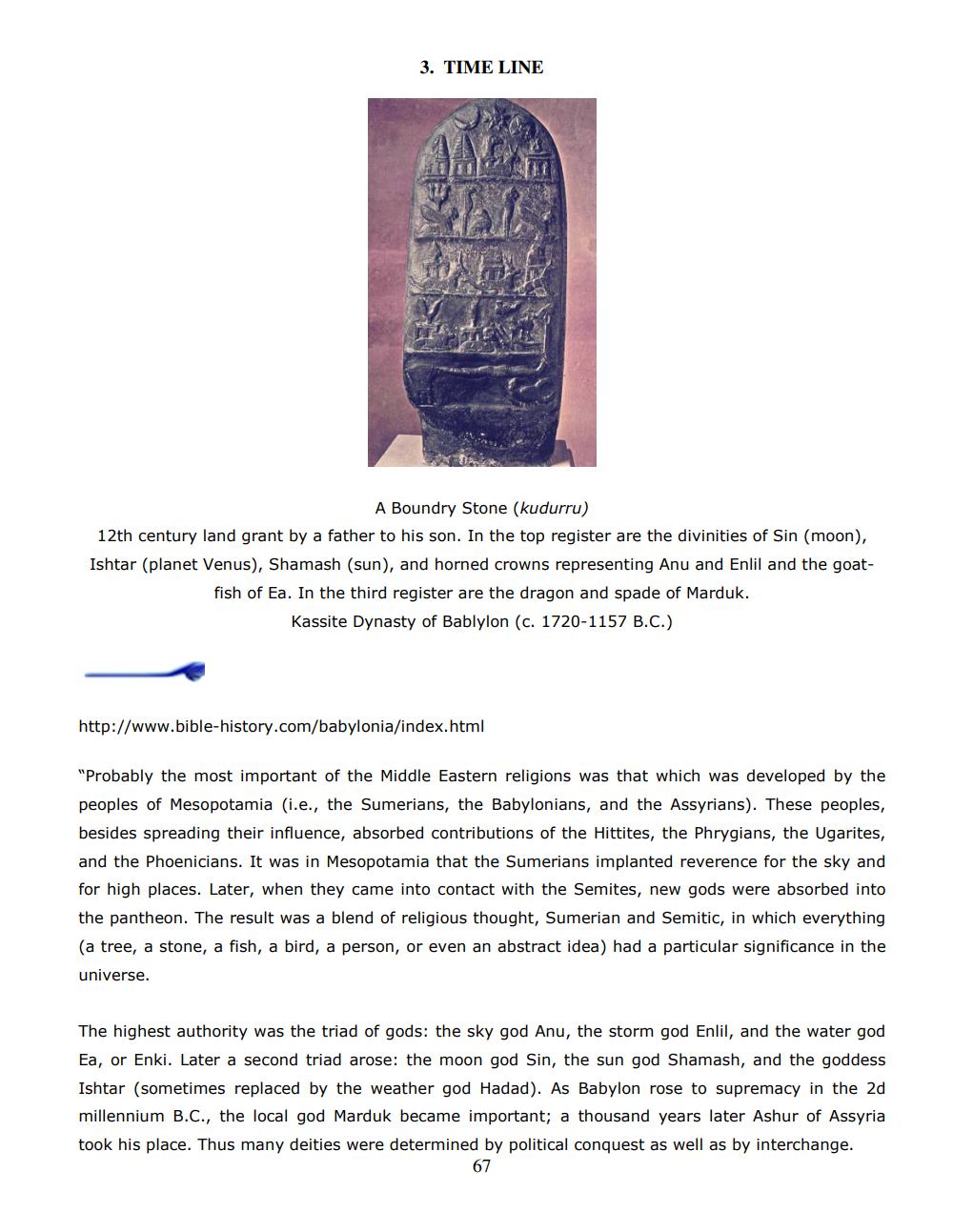________________
3. TIME LINE
A Boundry Stone (kudurru) 12th century land grant by a father to his son. In the top register are the divinities of Sin (moon), Ishtar (planet Venus), Shamash (sun), and horned crowns representing Anu and Enlil and the goat
fish of Ea. In the third register are the dragon and spade of Marduk.
Kassite Dynasty of Bablylon (c. 1720-1157 B.C.)
http://www.bible-history.com/babylonia/index.html
"Probably the most important of the Middle Eastern religions was that which was developed by the peoples of Mesopotamia (i.e., the Sumerians, the Babylonians, and the Assyrians). These peoples, besides spreading their influence, absorbed contributions of the Hittites, the Phrygians, the Ugarites, and the Phoenicians. It was in Mesopotamia that the Sumerians implanted reverence for the sky and for high places. Later, when they came into contact with the Semites, new gods were absorbed into the pantheon. The result was a blend of religious thought, Sumerian and Semitic, in which everything (a tree, a stone, a fish, a bird, a person, or even an abstract idea) had a particular significance in the universe.
The highest authority was the triad of gods: the sky god Anu, the storm god Enlil, and the water god Ea, or Enki. Later a second triad arose: the moon god Sin, the sun god Shamash, and the goddess Ishtar (sometimes replaced by the weather god Hadad). As Babylon rose to supremacy in the 2d millennium B.C., the local god Marduk became important; a thousand years later Ashur of Assyria took his place. Thus many deities were determined by political conquest as well as by interchange.
67




